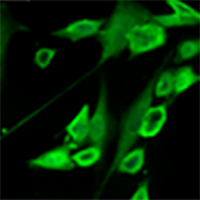Effects of miR-939 and miR-376A on ulcerative colitis using a decoy strategy to inhibit NF-κB and NFAT expression

Accepted: 9 December 2021
HTML: 18
All claims expressed in this article are solely those of the authors and do not necessarily represent those of their affiliated organizations, or those of the publisher, the editors and the reviewers. Any product that may be evaluated in this article or claim that may be made by its manufacturer is not guaranteed or endorsed by the publisher.
Authors
The aim of this study was to explore the effects of miR-939 and miR-376A on the pathogenesis of ulcerative colitis (UC) by using a decoy strategy to regulate the expression of nuclear transcription factor kappa B (NF-κB) and nuclear factor of activated T cells (NFAT). Such strategies represent a potential novel treatment for UC. Quantitative polymerase chain reaction (qPCR) analysis was used to detect the differences between the expression of miR-939, miR-376a, NF-κB, NFAT in the tissue samples from the resting and active stages of UC and healthy controls, and analyzed the correlation. The electrophoretic mobility shift assay was used to validate the ability of miRNAs to bind to NF-κB and NFAT. The expression of components of the intestinal barrier in UC and changes in apoptosis-related factors were examined by western blotting, qPCR, and immunofluorescence. After a dextran sulfate sodium (DSS)-induced mouse model of UC was established, the morphological changes in the colonic tissues of mice, the changes in serum inflammatory factors, and the changes in urine protein or urine leukocytes, liver enzymes, and prothrombin time were measured to examine intestinal permeability. The expression of miR-939 and miR-376a in human UC tissue was significantly lower than that in the normal control tissue, and was negatively correlated with the expression of NF-κB and NFAT. miR-939 and miR-376a decoy strategies resulted in a beneficial increase in the expression of claudins, occludins, and ZO-1 protein and inhibited apoptosis in intestinal epithelial cells. The disease activity index of the UC model group was significantly higher than that of the normal control group. The expression of inflammatory factors in the decoy group was higher than that in the UC model group. Therefore, from the experimental results, it can be concluded that using miR-939 and miR-376a to trap NF-κB and NFAT inhibits the activation of transcription factors NF-κB and NFAT, which in turn inhibits the expression of inflammatory factors and results in partial recovery of the intestinal barrier in UC. The decoy strategy inhibited apoptosis in the target cells and had a therapeutic effect in the mice model of UC. This study provides new ideas for the development of future clinical therapies for UC.
How to Cite

This work is licensed under a Creative Commons Attribution-NonCommercial 4.0 International License.
PAGEPress has chosen to apply the Creative Commons Attribution NonCommercial 4.0 International License (CC BY-NC 4.0) to all manuscripts to be published.

 https://doi.org/10.4081/ejh.2022.3316
https://doi.org/10.4081/ejh.2022.3316






